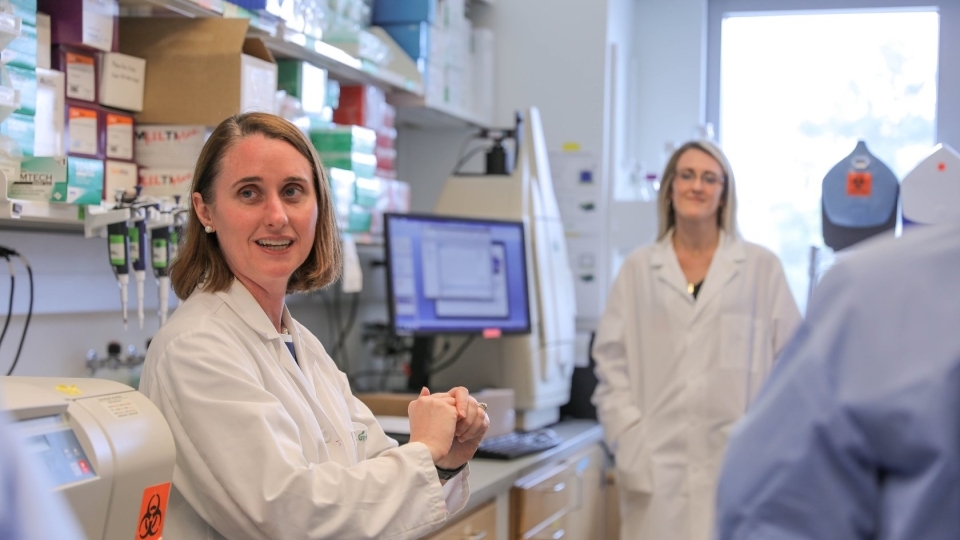Alumni Voices: The Way We Do Healthcare Will Never Be the Same
April 22, 2020
- Author
- Mark Johnson

Sallie Permar ’97 and colleagues with expertise in virology, immunology, and vaccine and drug development quickly shifted their research focus to therapies and vaccine development for COVID-19.
Sallie Permar teaches at Duke’s medical school, conducts research in vaccines, practices pediatrics and offers a hopeful result from the COVID-19 pandemic:
Health care will never be the same—in a good way.
Hospitals, doctors’ offices and other providers will deliver and charge for health care differently, she said. Medical staffs will forever change how they protect patients and themselves, and policy makers hopefully will revamp how the nation handles emergency supplies.
“The amount of flexibility and innovation that has been demonstrated, the heavy workload that has been handled, reconfiguring who is working where in a health care system,” Permar said, “all of that has been part of a story people are not seeing.”
Permar, a 1997 graduate of Davidson, is an associate dean and a professor of pediatrics and immunology at Duke University School of Medicine. She sees enormous shifts in her day-to-day experience at Duke’s hospital, and in her broader research and teaching. Hospital staff are using safer channels for talking to patients, call it “medical distancing,” such as calling a phone in the patient’s room to ask questions and gather information. Doctors and nurses are seeing patients over video connections to help prevent the spread of the virus.
“For as long as I’ve been in medicine we have been talking about telehealth,” Permar said, “and we implemented it in a week.”
Duke’s hospital is screening everyone who enters. A health care professional asks visitors questions about exposure to COVID-19, travel and symptoms. Temperature checks are next. The checks create lines, so staff have to shift schedules to allow time to get in. All health care staff at hospitals are wearing masks.
The money side of health care, billing, has been based on a provider seeing a patient in person. Providers were uncertain how to bill for video visits, how to handle the technology and whether patients would accept the idea, Permar said. They moved quickly past those hurdles when the pandemic settled in, she said, and will dramatically increase the use of telehealth in the years to come.
Permar predicts policy makers will be forced to confront the nation’s insufficient stockpiles, such as the depletion of protective gear for medical personnel.
“We have reduced stockpile capacity and pandemic preparedness over time to save costs,” Permar said. “It didn’t reduce costs in the end when we look at the hit to the economy.”
When she’s not working at the hospital or standing up a new program in vaccine COVID-19 research, Permar has shared observations from her work and research on social media, including this recent reflection:
“We will all remember the actions we took during this pandemic, how we responded, what our children observed, and how we contributed.”
Additional Media
- Op-Ed: We are losing ground on every other disease while fighting COVID-19
Sallie Permar’s work focuses on the development of vaccines to prevent vertical transmission of neonatal viral pathogens. The Los Angeles Times published this piece, authored by Permar, on April 22.



